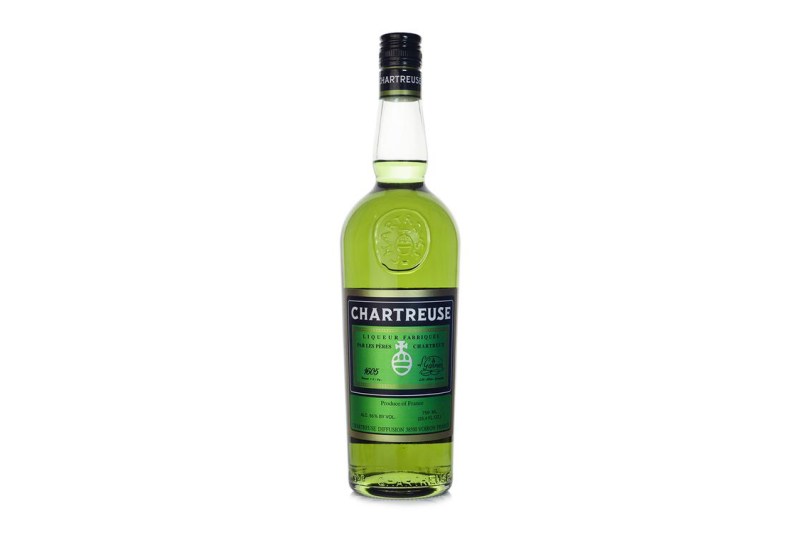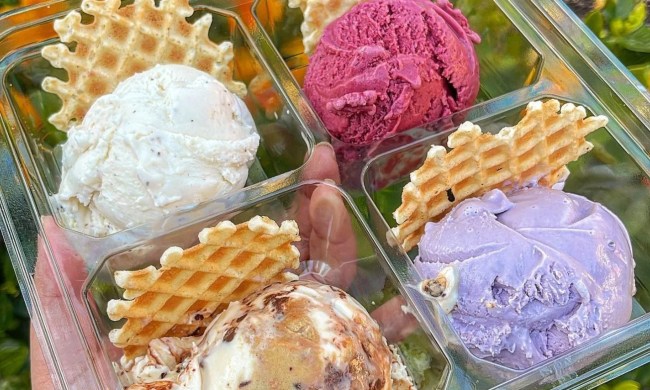The supply chain continues to throw us curveballs, still wobbly from the pandemic. Over the last few years, we’ve had trouble sourcing everything from lumber and kids’ Tylenol, to Thanksgiving turkeys, to avocados and Champagne. Now, it’s Chartreuse’s turn.
The iconic green liqueur has been made for nearly three centuries, the work of monks living in a mountainous part of France. It’s been a favorite among bartenders for generations, as both a great way to add some color for a more vibrant drink and a way to add flavor that tastes herbaceous and fresh. Some 130 natural ingredients are added to this complex beverage, atop a wine alcohol base.

Some enjoy the stuff neat, while others prefer it in a classic cocktail like The Last Word or an Alaska. There’s yellow Chartreuse as well, a sibling liqueur made by the same monks, but it’s not quite as coveted. However you enjoy it, Chartreuse began, like so many famous spirits and liqueurs, flexing its medicinal qualities. The vibrant liquid was deemed to extend your lifespan in the early 17th Century. But before we dive too deep, let’s cover the lack of bottles.
Why is there a Chartreuse shortage?
Interestingly, the shortage is twofold. The least sexy reason is that there’s a bit of a glass shortage stemming from the pandemic. The cooler reason is that the monks who know the secret recipe don’t want to sell out. Yep, despite high demand for Chartreuse all over the world, the Carthusian community behind it has little interest in upping the supply. They’re happy just doing their thing high in the French Alps, like they have been for nearly 300 years. That’s a decidedly badass move, we must say.
As explained in this letter, the Carthusian monks “are limiting production to focus on their primary goal: protect their monastic life and devote their time to solitude and prayer.”
The letter further explained: “In addition, the monks are not looking to grow the liquor beyond what they need to sustain their order. Making millions of cases does not make sense in today’s environmental context and will have a negative impact on the planet in the very short term.”
Swap Chartreuse out with something else
Because convincing a monk to change his mind is a tall task, it might be wise to find a substitute. Whether you’re looking for a great cocktail while out at the bar (check out the best bars in America while you’re at it) or mixing something up at home, there are options that can work well in place of green Chartreuse.
Arguably, the best option is Dolin Génépy. It’s also made in the French Alps and is a close relative of green Chartreuse. You get all those spring-like green flavors (sage, especially), and it has the layers that Chartreuse has.
Strega is another option, the Italian lesser-known liqueur that’s bright yellow and made from 70 herbs and spices.
Can’t find those? Try Drambuie or consult your local bottle shop or specialty liquor store. A lot of domestic producers are trying their hands at liqueurs made with natural herbs, plants, and more.
The green Chartreuse shortage is here, but we’re going to ride it out. It’s not the first supply chain drinks shortage, and it won’t be the last. With the above options, you’ll be able to get by almost like you did before. And if the monks do decide to make more, you may want to keep these options in mind, as Chartreuse has never been easy on the wallet.


